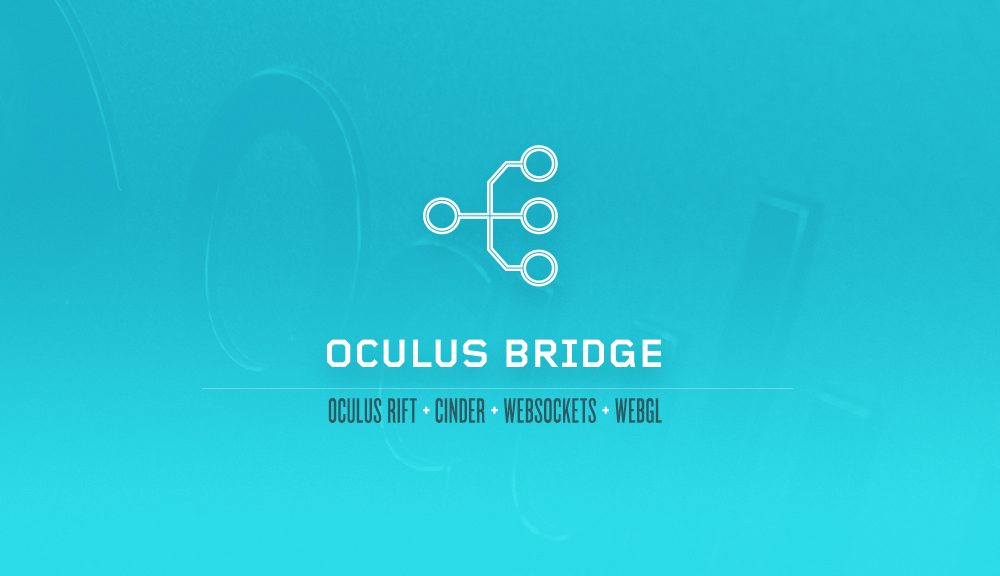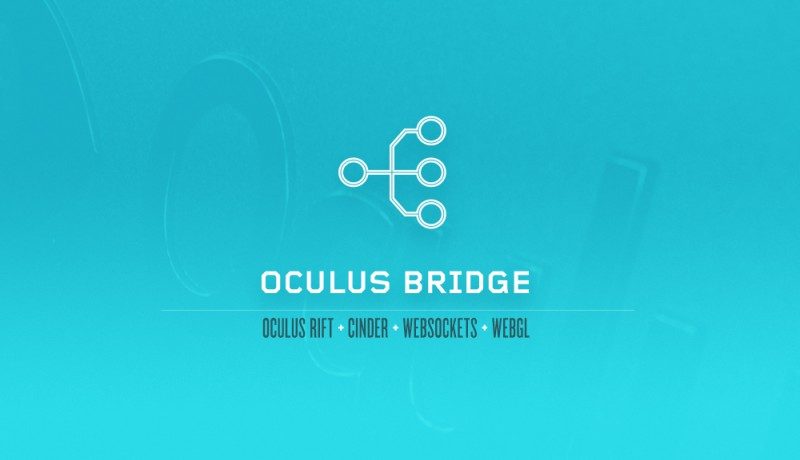Oculus Bridge is a free package to get Oculus Rift head tracking data into the browser. With support for Mac OSX and Windows, Oculus Bridge opens the door for Rift integration with web-based applications.
Oculus Bridge was created by Instrument, an independent digital creative agency based in Portland, Oregon.
As Instrument explains it, the program consists of two parts: a native application for Mac OSX and Windows that sends the Oculus Rift’s data to the web browser with the use of websockets, and a javascript object for the browser that manages the websocket connection and message. Instrument calls it, “a simple drop-in solution to make use of the head tracking data for any web based experience.”
They have an overview video of Oculus Bridge here (half way down the page).
The company also says that they’ve designed Oculus Bridge to be as platform agnostic as possible. While their internal prototypes and examples are based on the THREE.js library, they say that Oculus Bridge has no dependencies and can be used with any other javascript framework.
Smartly, Oculus Bridge sends more than just orientation data to the browser. It also includes screen size and FoV information (as opposed to hard-coding those values into the code), which Instrument hopes will make it easily extensible for future iterations of the Oculus Rift and (presumably) for other HMDs as well.
Their video (above) also demonstrates Oculus Bridge’s flexibility in component connection, being easily able to connect the pieces in any order (ie: Oculus Rift attached first, then Oculus Bridge launched, then the web program — or the reverse order). The program also doesn’t need any plugins on the browser side, making it simple for any Oculus Rift user to experience browser-based virtual reality content.
Oculus Bridge is open source so developers are free to modify it for their own use-cases.
Developers can find the Oculus Bridge source code on GitHub, including documentation and examples.
A Foundation for Web-based Virtual Reality
From Instrument’s demonstration, Oculus Bridge is a developer-friendly foundation for integration the Oculus Rift into web applications. With the continued advancement of WebGL and browser performance, virtual reality web applications become increasingly viable.
For one, I’d love to see all of those 360 degree ‘virtual tours’, often found on university and facilities websites, become virtual reality tours with Oculus Rift integration. What would be a better way to get a sense of a space over the internet than popping on your Oculus Rift and looking around it with head-tracking? Lowering the barrier to accessing rich content is always good for the expansion of a given platform; Oculus Bridge does just that.
Instrument acknowledges that Oculus Bridge is not the first piece of software to enable web browsers to access the Rift’s head-tracking data.
VR.js is another example of a javascript library intended to use the Oculus Rift with web content — additionally, it supports the Razer Hydra as a source of input to the browser. Oculus Bridge is notable for it’s effort to make the experience more user friendly for non-developers, thanks to a simple executable file for the end-user on Mac OSX and Windows.









